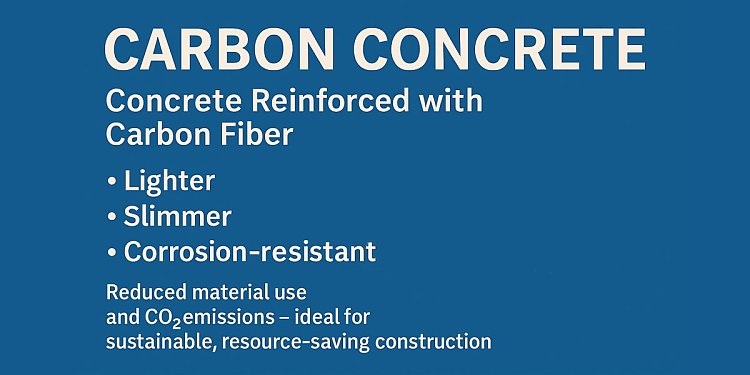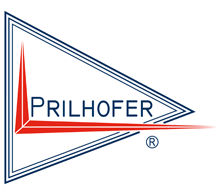Carbon concrete - revolution in modern construction
Concrete with innovative carbon fiber reinforcement
What is carbon concrete?
Carbon concrete is an innovative composite material consisting of concrete and a reinforcement made of carbon fibres. This non-metallic reinforcement replaces conventional steel and enables completely new construction approaches. As carbon does not corrode, i.e. it is chemically resistant, the concrete cover can be considerably lower. The result is significantly slimmer, lighter and at the same time more robust components with longer life cycles.
Carbon concrete is lighter than reinforced concrete with very high tension strength
Carbon also has a very high tensile stability with a low own weight. This allows precise material optimisation and a significant reduction in resource consumption - savings of up to 80% can be achieved in some areas of application. This is particularly relevant with regard to the carbon footprint, since cement - as a main part of concrete - is responsible for high emissions. Slimmer elements therefore also mean less CO₂ per building.

Why is carbon concrete relevant for the future of construction?
The construction industry is facing major challenges: Resources are becoming more scarce, CO₂ regulations are getting tougher, while at the same time the requirements for durability and efficiency are increasing.
Carbon concrete offers a promising answer to these challenges, especially in areas where weight, material consumption or corrosion vulnerability have limited previous construction methods. The potential of the material is particularly evident where innovative and resource-saving solutions are required. At present, carbon concrete is mainly used for manual processing and industrial production, for example through automated reinforcement, is still in its early stages. The recycling of carbon fibres has also not yet been standardised. Nevertheless, numerous research and pilot projects clearly show the potential that this innovative material holds for the construction industry in the future.
Carbon concrete and precast elements - the perfect combination
The advantages of the corrosion-free, lightweight material can be optimally used in industrial prefabrication in particular - with clear added value for building owners, planners and precast plants:
- Slim cross-sections and filigree components can be produced precisely and cost-effectively in the factory - with less material but the same load-bearing capacity.
- The non-corroding carbon reinforcement enables durable quality without the additional protective layers that steel requires. This saves resources, weight and space.
- Even complex shapes and challenging geometries can be realised more easily and reliably thanks to modern production technologies such as 3D printing or customised formwork.
Examples of applications in the area of prefabricated elements include
- Facade elements: filigree, load-bearing & design-oriented components
- Bridge panels: long-lasting & corrosion resistant
- Lightweight slab elements: large spans without thick cross-sections
- Renovation: Reinforcement of existing buildings with carbon concrete panels
Focus on innovative materials for prefabrication
Prilhofer Consulting is following developments in the field of carbon concrete with great interest. Although carbon concrete still plays a subordinate role in today's precast production, its characteristics open up promising perspectives for new construction methods and more sustainable construction.
Together with you into the future!
As an independent consultant and factory planner, we are thinking about tomorrow's solutions today. We therefore keep an eye on new materials such as carbon concrete in order to always provide our customers with the best possible advice.
If you are interested in professional advice on carbon concrete or would like to get involved in industrial construction, please contact us at any time.
We will be happy to assist you!
Quellenangaben:

